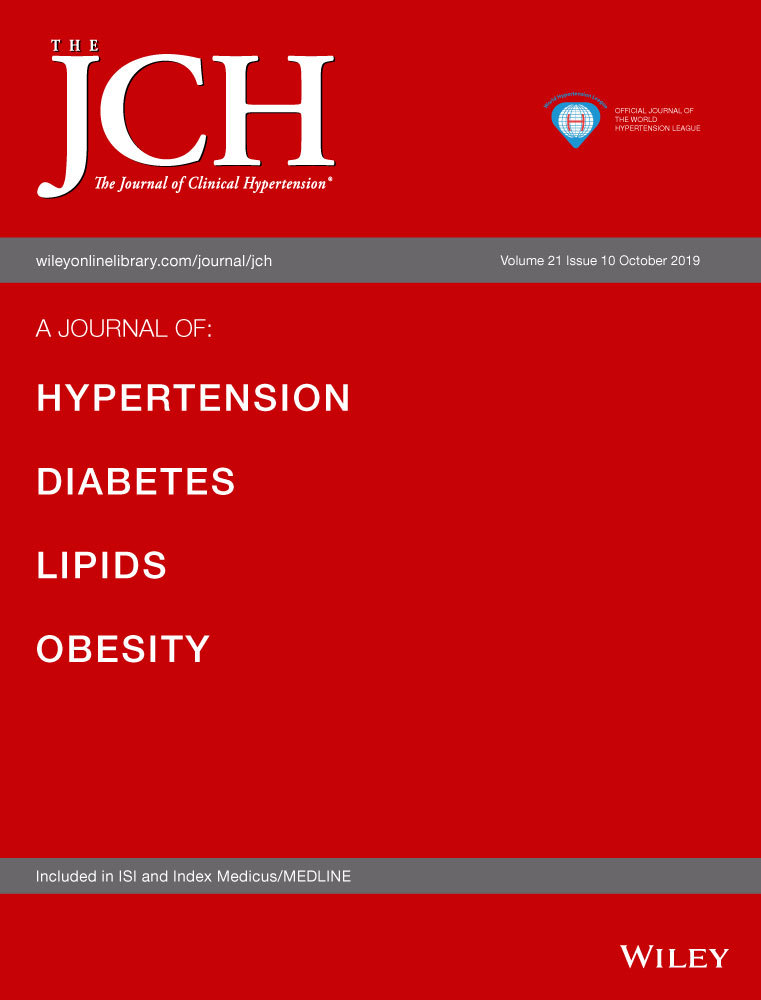Hypertension and hyperhomocysteinemia as risk factors for chronic kidney disease: A dangerous duo?
Chronic kidney disease (CKD) is a noncommunicable disease with substantial global burden, becoming an issue of global health concern. The prevalence of CKD is reported around 11%,1 although variations exist between different countries.2 There is a reported 10.4% prevalence in men and 11.8% in women, with higher rates recorded in middle- and low-income countries.3 CKD is considered as a major risk factor for cardiovascular disease, end-stage renal disease, and premature death, highlighting the need for early recognition and intervention.4, 5
Hypertension, defined as systolic blood pressure (SBP) ≥140 mm Hg and/or diastolic blood pressure (DBP) ≥90 mm Hg, was estimated to affect 1.13 billion adults in 2015 worldwide,6 with alarmingly low reported rates of awareness and blood pressure control among treated individuals.7 Together with diabetes mellitus, hypertension is the major cause for the development and progression of CKD,1, 8 while resistant or masked hypertension is commonly encountered in the CKD population.9, 10 Blood pressure (BP) control prevents renal failure in patients with proteinuria; however, in nonproteinuric kidney disease these findings have not been confirmed.11
Homocysteine (Hcy), a sulfur-containing aminoacid involved in cellular metabolism, is considered as an independent risk factor for cardiovascular disease (CVD) in end-stage renal disease.12 Hyperhomocysteinemia (HHcy) is a common finding in CKD as it affects 85% of these patients.13 Hcy is excreted by the kidney, its metabolism is impaired in CKD and malnutrition leads to lack of folic acid and vitamin B12.14 Although the reduction of Hcy levels through supplementation of folic acid and vitamins is possible, data from randomized trials revealed controversial results regarding CVD, mortality, and CKD progression.13, 15, 16
In this issue of the Journal, Shi et al17 investigate whether the coexistence of hypertension and HHcy correlates with a greater incidence of CKD than the presence of hypertension or HHcy alone. In this cross-sectional study, 13 693 participants in the National Health and Nutritional Examination Survey (NHANES) 1999-2006 were included. Arterial hypertension was defined as the presence of systolic blood pressure (SBP) ≥140 mm Hg and/or diastolic blood pressure (DBP) ≥90 mm Hg, while CKD was defined as the presence of eGFR < 60 mL/min/1.73 m2 and/or urinary albumin to creatinine ratio (UACR) ≥3 mg/mmol. Hcy levels above 12 μmol/L were consistent with the diagnosis of HHcy.
Chronic kidney disease was present in 18.44% of the study population, while albuminuria was more frequent than reduced eGFR (12.8% vs 8.6%). In total, 30.6% and 10.3% of the participants were hypertensive or had HHcy, respectively, with a greater prevalence of hypertension or HHcy among patients with CKD. Moreover, subjects were divided into four distinct groups depending on the presence of CKD, which was expressed as either reduced eGFR, elevated UACR, or the combination of both. Subjects with CKD had statistically significant higher levels of SBP and serum Hcy, with the higher values being observed in the reduced eGFR plus albuminuria group.
Subsequently, multivariable logistic regression revealed that hypertension, HHcy, and CKD are clearly associated. Specifically, after adjustment for various parameters including age, sex, BMI, and diabetes mellitus, subjects with hypertension had a 1.8-times risk of CKD, while the risk was estimated 3 times for those with HHcy. Moreover, hypertension was more associated with albuminuria than with reduced eGFR (95.9% vs 81.8% risk increase, respectively), while on the contrary, the presence of HHcy was more related to reduced eGFR than albuminuria (6.6- vs 1.9-times) compared to subjects with normal Hcy levels. Interestingly, the coexistence of hypertension and HHcy resulted in a 5 times risk of CKD, with an odds ratio of 10.3 for reduced eGFR and 3.5 for albuminuria. Most importantly, an additive interaction between hypertension and HHcy toward CKD was observed (relative excess risk due to interaction: 2.1; Synergy index: 2.1).
This study has some limitations as well. First of all, this is a cross-sectional study and as such no causal relationships can be detected; study findings can be considered only as hypothesis-generating and have to be tested in large prospective studies in order to be confirmed. Then, the UACR was determined only once, casting doubts about the accuracy of albuminuria rates. This might have affected the prevalence of chronic kidney disease in this study (18.44%), which is much higher than the currently estimated prevalence of renal dysfunction. Then, the age difference between participants with or without chronic kidney disease is huge (almost 16 years), and the same applies for diabetes mellitus (4-times higher prevalence in CKD patients); although appropriate adjustments have been made, this might have affected study findings. Moreover, the study does not provide any information about the effects of hypertension and HHcy according to the magnitude of albuminuria and renal dysfunction, since no stratification according to chronic kidney disease stages and albuminuria (microalbuminuria and macroalbuminuria) was performed. From the opposite point of view, blood pressure and homocysteine were treated only as categorical variables, and no information about the effects on chronic kidney disease is provided when both parameters are treated as continuous variables. Furthermore, there is no information about the type of antihypertensive medications, although this might have affected urinary albumin excretion (eg, renin-angiotensin system inhibitors); likewise, there is no information about the dietary habits of study participants that might have affected homocysteine levels. Finally, other unknown confounders—beyond the known confounders mentioned before—might have affected study findings.
Considering that up to date there is no effective treatment for CKD other than control of modifiable risk factors, stricter management of hypertension and HHcy could exert beneficial effects on the progression of CKD. Future research could reveal not only the pathophysiologic mechanisms involved in this synergistic interaction, but also whether the simultaneous management of these two conditions could alter the course of CKD progression.
ACKNOWLEDGMENTS
None specific.
CONFLICT OF INTEREST
None to declare.




